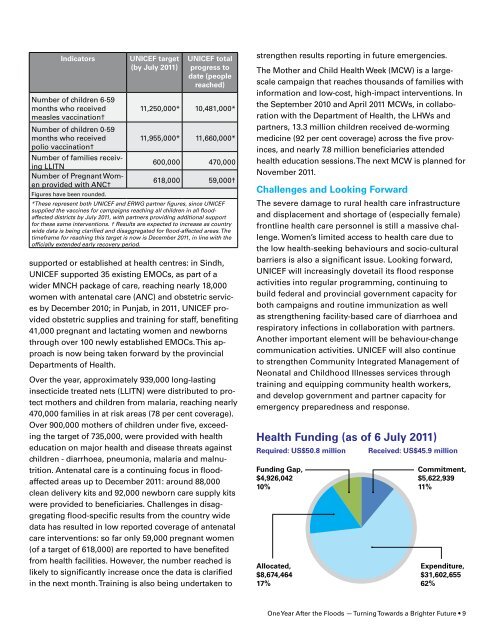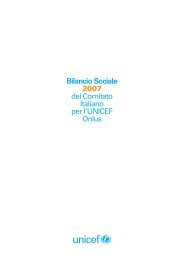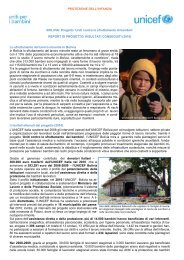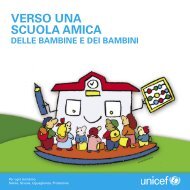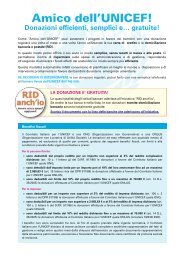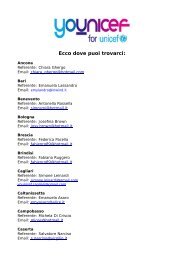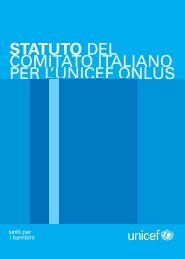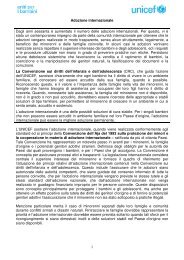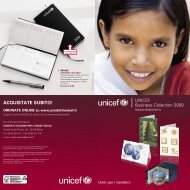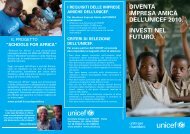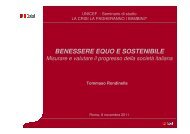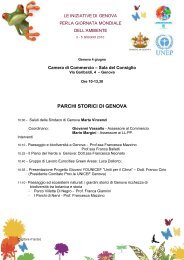Pakistan 1 Year Report - UNICEF Humanitarian Action Resources
Pakistan 1 Year Report - UNICEF Humanitarian Action Resources
Pakistan 1 Year Report - UNICEF Humanitarian Action Resources
Create successful ePaper yourself
Turn your PDF publications into a flip-book with our unique Google optimized e-Paper software.
Indicators<strong>UNICEF</strong> target(by July 2011)<strong>UNICEF</strong> totalprogress todate (peoplereached)Number of children 6-59months who received 11,250,000* 10,481,000*measles vaccination†Number of children 0-59months who received 11,955,000* 11,660,000*polio vaccination†Number of families receivingLLITN600,000 470,000Number of Pregnant Womenprovided with ANC†618,000 59,000†Figures have been rounded.*These represent both <strong>UNICEF</strong> and ERWG partner figures, since <strong>UNICEF</strong>supplied the vaccines for campaigns reaching all children in all floodaffecteddistricts by July 2011, with partners providing additional supportfor these same interventions. † Results are expected to increase as countrywide data is being clarified and disaggregated for flood-affected areas. Thetimeframe for reaching this target is now is December 2011, in line with theofficially extended early recovery period.supported or established at health centres: in Sindh,<strong>UNICEF</strong> supported 35 existing EMOCs, as part of awider MNCH package of care, reaching nearly 18,000women with antenatal care (ANC) and obstetric servicesby December 2010; in Punjab, in 2011, <strong>UNICEF</strong> providedobstetric supplies and training for staff, benefiting41,000 pregnant and lactating women and newbornsthrough over 100 newly established EMOCs. This approachis now being taken forward by the provincialDepartments of Health.Over the year, approximately 939,000 long-lastinginsecticide treated nets (LLITN) were distributed to protectmothers and children from malaria, reaching nearly470,000 families in at risk areas (78 per cent coverage).Over 900,000 mothers of children under five, exceedingthe target of 735,000, were provided with healtheducation on major health and disease threats againstchildren - diarrhoea, pneumonia, malaria and malnutrition.Antenatal care is a continuing focus in floodaffectedareas up to December 2011: around 88,000clean delivery kits and 92,000 newborn care supply kitswere provided to beneficiaries. Challenges in disaggregatingflood-specific results from the country widedata has resulted in low reported coverage of antenatalcare interventions: so far only 59,000 pregnant women(of a target of 618,000) are reported to have benefitedfrom health facilities. However, the number reached islikely to significantly increase once the data is clarifiedin the next month. Training is also being undertaken tostrengthen results reporting in future emergencies.The Mother and Child Health Week (MCW) is a largescalecampaign that reaches thousands of families withinformation and low-cost, high-impact interventions. Inthe September 2010 and April 2011 MCWs, in collaborationwith the Department of Health, the LHWs andpartners, 13.3 million children received de-wormingmedicine (92 per cent coverage) across the five provinces,and nearly 7.8 million beneficiaries attendedhealth education sessions. The next MCW is planned forNovember 2011.Challenges and Looking ForwardThe severe damage to rural health care infrastructureand displacement and shortage of (especially female)frontline health care personnel is still a massive challenge.Women’s limited access to health care due tothe low health-seeking behaviours and socio-culturalbarriers is also a significant issue. Looking forward,<strong>UNICEF</strong> will increasingly dovetail its flood responseactivities into regular programming, continuing tobuild federal and provincial government capacity forboth campaigns and routine immunization as wellas strengthening facility-based care of diarrhoea andrespiratory infections in collaboration with partners.Another important element will be behaviour-changecommunication activities. <strong>UNICEF</strong> will also continueto strengthen Community Integrated Management ofNeonatal and Childhood Illnesses services throughtraining and equipping community health workers,and develop government and partner capacity foremergency preparedness and response.Health Funding (as of 6 July 2011)Required: US$50.8 millionFunding Gap,$4,926,04210%Allocated,$8,674,46417%Received: US$45.9 millionCommitment,$5,622,93911%Expenditure,$31,602,65562%One <strong>Year</strong> After the Floods — Turning Towards a Brighter Future • 9


